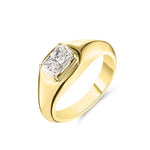You have no items in your shopping cart.
September’s birthstone Sapphire is said to be the "gems of all gems". Associated for centuries with royalty, sapphires symbolise nobility, loyalty and happiness in love. Almost as strong as diamonds, sapphires exist in a stunning array of colours and those that are not blue are known as "fancy sapphires". They come in violet, green, yellow, orange, pink, purple, and intermediate hues. Some stones exhibit the phenomenon known as color change, most often going from blue in daylight or fluorescent lighting to purple under incandescent light. Sapphires can even be gray, black, or brown.
One of The Big Four
In the 1800s gemstones were classified into two categories; precious and semi-precious. Only four were classified as precious; diamonds, rubies, sapphires and emeralds. Known as "the big four", they were considered the most expensive, rare and sought after, hence why they deserved to be called 'precious'.
Because of their durability and “hardness” sapphire is a good choice for daily wear. On a scale of one to 10, sapphires score nine on the Mohs scale of hardness. Diamonds are the only thing to surpass sapphires, meaning they're the only natural material to be able to scratch or cause damage to this gemstone. Thanks to their durability, sapphires are safe to be worn every day.
Blue sapphires can range in size anywhere from a few points to hundreds of carats although as a general rule most commercially available sapphires are below 5ct.
What to look for when buying Sapphire
Color is the most important quality factor for sapphire. The most highly valued sapphires are velvety blue to violetish blue and have a strong and vivid colour saturation without being too dark. Look at different colors of sapphire side by side to understand the range of qualities available. Dark colors like navy or midnight blue, and less saturated colors like grayish blue or straw yellow are more affordable than vivid colors.
The quality of the cut can make a big difference in beauty and brilliance. Your sapphire should sparkle in a lively way, reflecting light back evenly across the entire gem. Poorly cut gems are much less marketable and sell at a discount.
Should Sapphire have inclusions? Blue sapphires often have some inclusions. What are inclusions? Simply put, an inclusion is any material that is trapped inside of another mineral while that mineral forms. Blue sapphires with extremely high clarity are rare, and very valuable.
Caring for your sapphire jewellery.
When it comes to cleaning sapphire jewellery warm soapy water is always safe, just remember to put the stopper in the sink! Here at Ryan Thomas we offer a complementary jewellery cleaning service to our customers so you can drop in your sapphire jewellery to us and we can clean it and check it for you regularly.


















